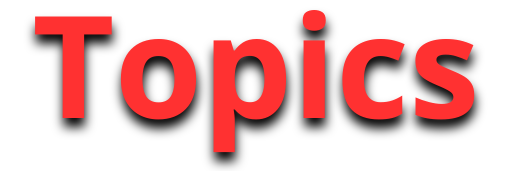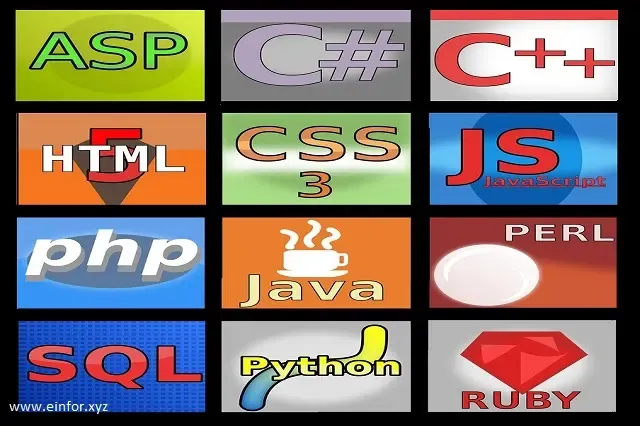Are you new to the world of programming? Do you want to dive into the vast ocean of coding but feel overwhelmed by the various programming languages out there? Fear not! This comprehensive guide will walk you through the different types of programming languages, their features, and use cases, and help you choose the right language for your programming endeavors.
Types of Programming Languages
Programming languages can be classified into several categories based on their characteristics and intended use. Let's explore some of the major types:
1. Procedural Programming Languages
Procedural programming languages follow a step-by-step approach to executing a program. They are known for their simplicity and ease of understanding. Common examples include C, Pascal, and Fortran. These languages are particularly useful for developing algorithms and mathematical calculations.
2. Object-Oriented Programming (OOP) Languages
OOP languages revolve around the concept of objects and classes, promoting modular and reusable code. This approach allows programmers to create complex applications by breaking them down into smaller, more manageable components. Popular OOP languages include Java, C++, and Python.
3. Functional Programming Languages
Functional programming languages treat computation as the evaluation of mathematical functions and avoid changing state or mutable data. They focus on immutable data and emphasize pure functions. Functional languages like Haskell, Lisp, and Erlang are well-suited for applications involving concurrency, parallelism, and distributed computing.
4. Scripting Languages
Scripting languages, such as JavaScript, Ruby, and Perl, are designed for automating tasks and rapid application development. They provide high-level abstractions and dynamic typing, allowing developers to write code more quickly and flexibly.
5. Markup Languages
While not traditional programming languages, markup languages like HTML and XML are widely used for structuring and presenting information on the web. They define the structure and layout of web pages, enabling browsers to interpret and display content correctly.
6. Domain-Specific Languages (DSLs)
Domain-specific languages are tailored to address specific domains or problem areas. They provide abstractions and syntax specifically designed for the targeted domain, allowing developers to express concepts more concisely. SQL (Structured Query Language) is an example of a DSL used for querying databases.
7. Compiled Languages
Compiled languages, such as C, C++, and Go, require a compilation step before the program can be executed. The source code is transformed into machine-readable binary code, making the resulting programs highly efficient and performant.
8. Interpreted Languages
Interpreted languages, including Python, Ruby, and JavaScript, do not require a separate compilation step. Instead, an interpreter executes the code directly, line by line. This approach provides flexibility and simplifies the development process.
9. Low-Level Languages
Low-level languages, such as Assembly and Machine Code, interact directly with the computer hardware. They offer precise control over system resources and are used for tasks that require maximum efficiency or interaction with specific hardware components.
10. High-Level Languages
High-level languages like Python, Java, and C# abstract away low-level details, enabling developers to focus more on problem-solving and logic. They provide extensive libraries and frameworks, simplifying the development process and promoting code reusability.
FAQs About Programming Languages
FAQ 1: What is the most popular programming language?
JavaScript, renowned for its versatility and use in web development, consistently ranks among the most popular programming languages. Its ability to run on browsers makes it an excellent choice for front-end development.
FAQ 2: Which programming language should I learn first as a beginner?
For beginners, Python is often recommended due to its simplicity, readability, and extensive community support. Its clean syntax and vast array of libraries make it an excellent language to start your programming journey.
FAQ 3: Are there any universal programming languages?
While no language can truly be considered universal, some languages, like Python and JavaScript, are highly versatile and widely used across different domains and platforms. Learning one of these languages can provide a solid foundation for further exploration.
FAQ 4: Can I mix programming languages within a project?
Yes, it is possible to use multiple programming languages within a single project. This is known as polyglot programming. Different languages may be chosen for their specific strengths, such as using Python for data processing and JavaScript for front-end web development.
FAQ 5: Which programming languages are used for mobile app development?
Java and Kotlin are popular choices for Android app development, while Swift is commonly used for iOS app development. React Native and Flutter, both frameworks that use JavaScript, offer cross-platform mobile development capabilities.
FAQ 6: How can I choose the right programming language for my project?
Choosing the right programming language depends on several factors, including project requirements, intended platform, scalability, and personal preferences. Consider the purpose of your project, the available resources, and the language's ecosystem and community support.
Conclusion
As you embark on your programming journey, understanding the different types of programming languages will help you make informed decisions and choose the language that aligns with your project's requirements and goals. Whether you opt for procedural languages, dive into the world of object-oriented programming, or explore the possibilities of functional languages, each type has its own unique strengths and applications. Embrace the versatility and power of programming languages, and unleash your creativity to build amazing software solutions.

